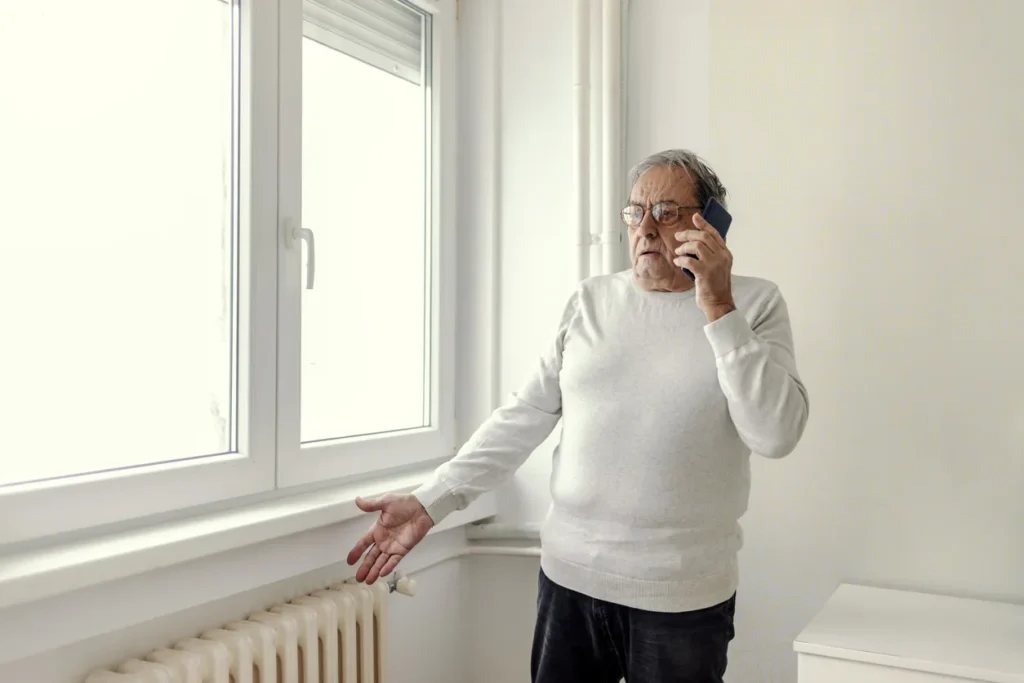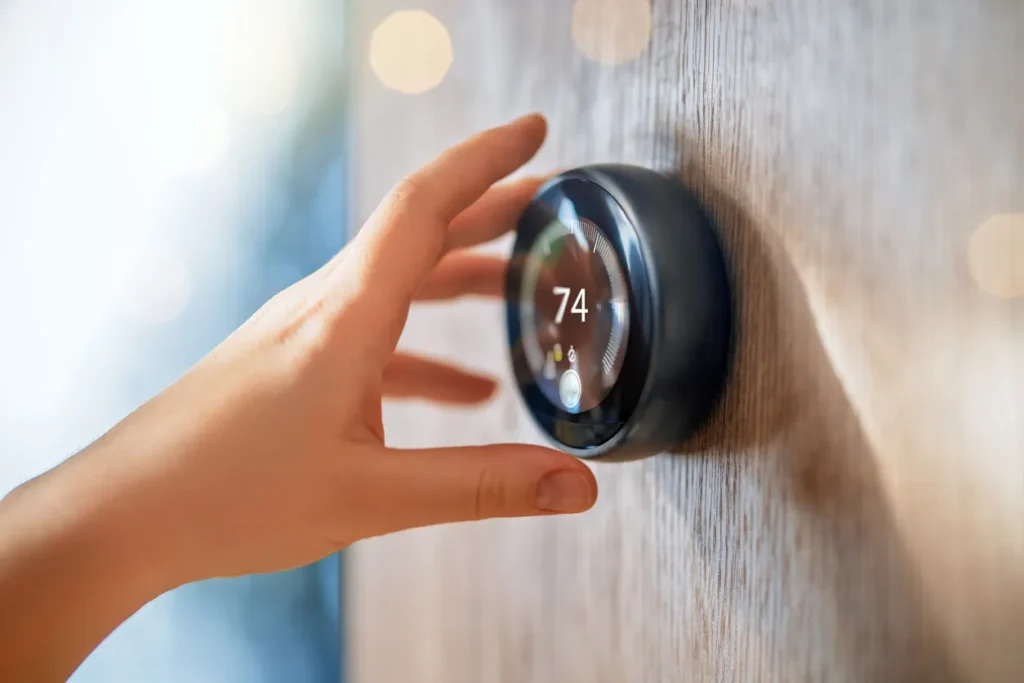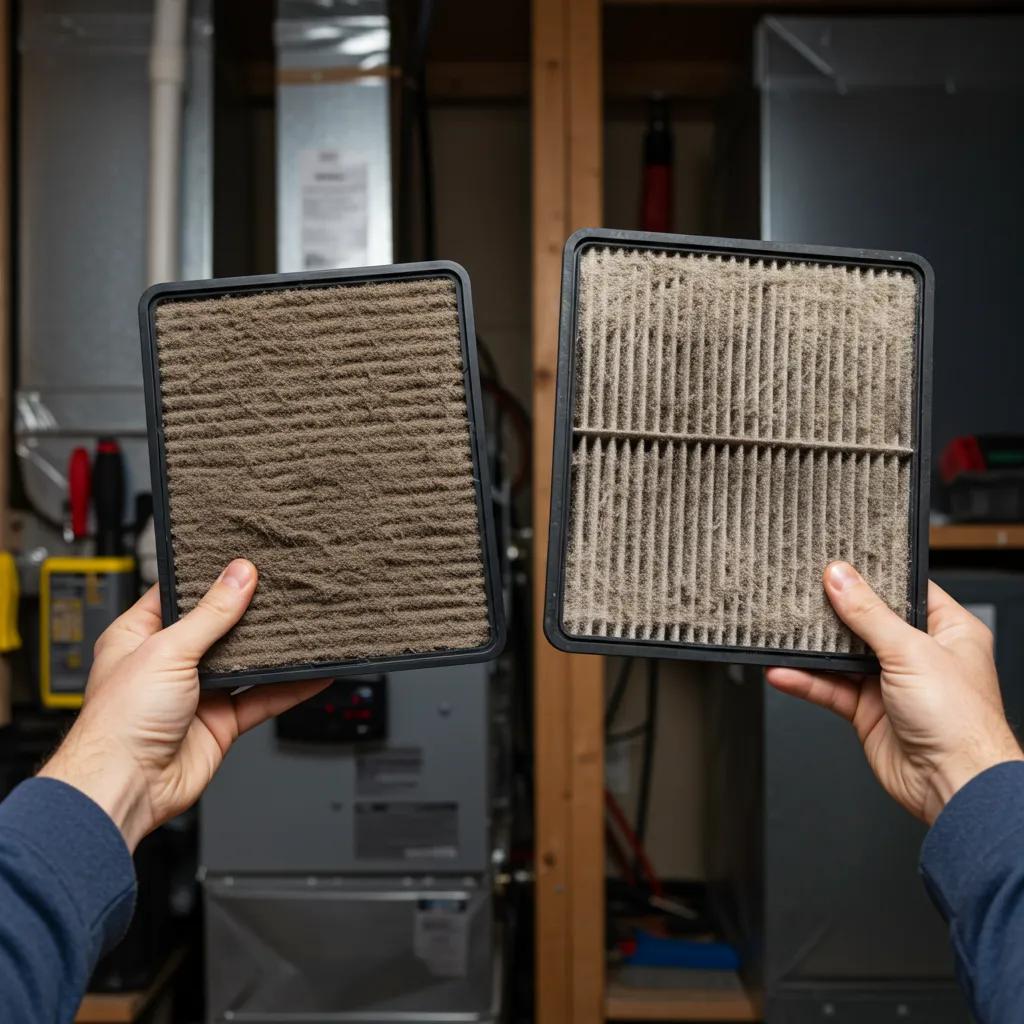
When Your Furnace Blows Cold Air: What to Do and How We Can Help

When your furnace starts blowing cold air, it’s more than just an inconvenience – it’s a sign that something isn’t right with your home’s heating system. In Central Florida, where comfort is key, an unexpected chill can really throw off your day and even lead to higher energy bills. This guide will walk you through some easy checks you can do yourself, explore common reasons why your furnace might be blowing cold air, and offer step-by-step troubleshooting tips. We’ll also cover when it’s time to call in the pros and how regular maintenance can keep your system running smoothly. Throughout, you’ll find practical advice backed by the local expertise of Corman and Sons Air Conditioning and Heating, your trusted HVAC partner in Eustis, FL.
Quick Checks to Get Your Furnace Blowing Warm Air Again
Before you dive into more complex fixes, let’s start with a few simple things you can check that often solve the problem right away. These three quick checks focus on your thermostat settings, airflow, and power supply. Doing these can save you time, prevent an unnecessary service call, and get your furnace working as it should.
- Make sure your thermostat is set to “Heat” and that the fan is set to “Auto.” If it’s set to “On,” the fan will run constantly, even when the furnace isn’t producing heat.
- Take a look at your air filter. If it’s clogged with dust, replace or clean it. Restricted airflow can cause your furnace to shut down as a safety measure, leading to cold air.
- Check that the furnace power switch is turned on and that the circuit breakers or fuses for your system haven’t tripped. A lack of power means the furnace can’t start its heating cycle.
Often, completing these checks will get warm air flowing again or at least help you pinpoint the issue, guiding you toward more detailed troubleshooting or a call to a professional if the cold air persists.
How Do Thermostat Settings Affect Your Furnace's Heating?

Your thermostat is essentially the brain of your heating system, telling the furnace when to turn on the heat. If it’s set incorrectly – perhaps to “Cool” or with the fan stuck on “On” – it can confuse the system and result in unheated air blowing through your vents. Setting it to “Heat” and choosing a temperature higher than the current room temperature will signal the furnace to start its heating process. Likewise, setting the fan to “Auto” ensures it only runs when the furnace is actually producing heat. Checking the thermostat’s batteries, ensuring clean connections, and making sure it’s accurately reading the temperature are all important steps to prevent those frustrating cold air blowouts.
Why Does a Dirty Air Filter Mean Cold Air from Your Vents?

When your air filter is clogged, it severely restricts the amount of air that can flow over the heat exchanger. This can cause the system to overheat or even shut down the burners completely to prevent damage. If the airflow drops too low, your furnace’s safety controls will kick in, turning off the heat and leaving you with cold air blowing from the vents. Regularly replacing disposable filters (typically every 1-3 months) or cleaning reusable ones is crucial. This simple step not only prevents cold air issues but also helps your system run more efficiently, improves your indoor air quality, and extends the life of your furnace components.
How Can Power Supply Problems Stop Your Furnace from Heating?
Your furnace needs a steady supply of electricity to power its control board, ignition system, and blower motor. If a circuit breaker trips, a fuse blows, or the furnace’s own power switch is turned off, the system won’t be able to operate correctly. Even a brief power interruption can sometimes reset safety features and prevent the ignition sequence from starting, leading to the fan running without any heat. Check your home’s electrical panel for any tripped breakers and make sure the furnace power switch, usually located near the unit, is in the “ON” position. If you suspect ongoing electrical issues, it’s best to consult an HVAC professional or an electrician.
Common Culprits Behind a Furnace Blowing Cold Air
When your furnace isn’t delivering warm air, the issue often lies within its core systems: ignition, safety sensors, fuel supply, or air distribution. A problem in any of these areas can lead to insufficient heat or intermittent cold air. Understanding how each part works helps clarify why a failure results in cold air and what steps might be needed to fix it. For professional assistance, consider our heat equipment repair services.
How Do Pilot Light and Ignition System Issues Cause Cold Air?
The pilot light or electronic igniter is what starts the combustion process in your furnace. If the pilot light isn’t staying lit, the igniter is faulty, or the gas orifice is clogged, the burners won’t ignite. When the furnace’s control board senses that the burners aren’t lighting, it will prevent the blower from circulating warm air and will typically just run the fan. Relighting the pilot according to your furnace’s manual or replacing a faulty igniter can often resolve this. Ensuring proper gas pressure and clean ignition ports are key to getting your burners working reliably again.
Why Does a Faulty or Dirty Flame Sensor Affect Furnace Heating?
The flame sensor is a critical safety component that confirms the burners are lit. If it doesn’t detect a flame, it signals the control board to shut off the gas supply to prevent a dangerous buildup. Over time, soot can build up on the sensor, making it unable to accurately sense the flame. When this happens, the furnace might ignite briefly but then shut off, leading to repeated cycles of ignition failure and cold air. Cleaning the sensor with fine-grit sandpaper or replacing it if it’s damaged can restore proper flame detection and ensure your furnace delivers consistent heat.
How Can a Clogged Condensate Line Impact Your Furnace?
High-efficiency furnaces create condensation as part of their operation, which needs to drain away through a dedicated line. If this line gets clogged with debris, algae, or ice, a safety switch (like a float or pressure switch) will detect the blockage and shut down the furnace’s burners to prevent water damage. While the blower might continue to run, it will be circulating unheated air. Clearing the condensate line, often with water or a mild cleaning solution, and ensuring it has the proper slope will allow normal drainage and let your furnace resume its heating cycles.
What Role Does the Fan Limit Switch Play in Furnace Overheating and Cold Air?
The fan limit switch monitors the temperature inside your furnace’s main cabinet (the plenum). Its job is to turn on the blower fan once the heat exchanger is hot enough and to shut off the burner if the system overheats, often due to restricted airflow. If overheating occurs, the switch will shut down the burner but may keep the fan running to cool the system. During this safety lockout, you’ll get cold air from your vents until the temperature drops back down. Addressing any airflow restrictions, like a dirty filter, is key to preventing these overheating situations.
How Do Fuel Supply Issues Cause a Furnace to Blow Cold Air?
For gas furnaces, a consistent supply of natural gas at the correct pressure is essential. For oil furnaces, it’s an unobstructed fuel line and a working pump. If a gas valve is accidentally closed, a regulator fails, or an oil tank runs low, the fuel supply is interrupted. Without fuel, the burners can’t ignite, and the furnace’s control board will shut down the heating cycle, resulting in the fan blowing cold air. Double-checking that all shut-off valves are open, ensuring timely oil deliveries, and having pressure regulators or pumps inspected by a professional are important steps to maintain a steady fuel supply.
Why Do Leaking or Damaged Ductwork Result in Cold Air From Vents?
Your furnace heats the air, but it’s the ductwork that delivers that warm air throughout your home. If your ducts have leaks, cracks, or disconnected joints, heated air can escape into your attic, crawlspace, or walls before it ever reaches your living areas. This means less warm air makes it to your vents, and what does arrive might feel cooler than it should. Sealing up these leaks with mastic sealant or metal tape and ensuring duct joints are secure can significantly improve how efficiently your home is heated. Proper insulation in unconditioned spaces also helps keep that warm air from escaping.
How Does a Cracked Heat Exchanger Lead to Your Furnace Not Heating?
The heat exchanger is a vital component that transfers heat from the combustion process to the air circulating through your home, while keeping dangerous exhaust gases separate. If cracks or corrosion develop in the heat exchanger, these gases can mix with your breathable air. Modern furnaces have safety sensors that detect such breaches and will shut down the burner to protect your family. While the blower might continue to run, the air passing through won’t be heated, and more importantly, it could be circulating harmful fumes. A cracked heat exchanger is a serious issue that requires immediate professional attention and replacement of the unit.
Your Step-by-Step DIY Guide to Troubleshooting a Furnace Blowing Cold Air
When your furnace starts blowing cold air, tackling the problem systematically can help you identify and fix minor issues yourself, or at least give you a clearer picture of what’s going on before you call for professional help. This structured approach moves from the simplest checks to more involved troubleshooting.
- Start by checking your thermostat settings and compare the temperature at your return vents versus your supply vents. This can help narrow down the problem.
- Inspect the pilot light assembly or igniter for any visible issues like corrosion or damage. If you’re comfortable and your manual allows, try relighting the pilot or replacing the igniter.
- Remove your air filter, clean or replace it, and make sure it’s installed correctly. Proper airflow is essential.
- Gently wipe the flame sensor with fine-grit sandpaper to remove any buildup, then put it back in place. This can often restore accurate flame detection.
- Visually inspect accessible ductwork for any obvious gaps, cracks, or loose connections. Seal any leaks you find with appropriate materials.
Following these steps can often resolve common furnace problems and get warm air flowing again. If the issue persists, these actions will also provide valuable information for an HVAC professional.
What Are the First Steps to Diagnose Furnace Cold Air Issues?
Begin by setting your thermostat to “Heat” and raising the temperature setting at least five degrees above the current room temperature. Listen carefully to see if you can hear the furnace attempting to ignite or cycle its burners. Next, measure the air temperature coming from your supply vents and compare it to the air temperature at your return grilles. If the difference is less than about 10°C (or 20°F), it suggests a problem with combustion or airflow. Also, take note of any blinking status lights on your furnace’s control board, as these often indicate specific sensor or safety switch faults. Documenting these initial observations will make troubleshooting much more efficient.
How to Safely Inspect and Reset the Pilot Light?
Safety first: turn off the furnace’s power switch and temporarily close the gas shut-off valve. Remove the furnace access panel to locate the pilot assembly. Use a flashlight to check for soot buildup, a bent thermocouple, or a blocked pilot orifice. If your furnace manual provides instructions and you feel comfortable, you can attempt to relight the pilot. This usually involves holding down a reset button while applying a flame to the pilot assembly and waiting until a steady blue flame is established. Once relit, reopen the gas valve, restore power, and confirm the main burners ignite on the next heating cycle. A stable pilot flame is crucial for consistent heating.
How to Clean or Replace a Dirty Air Filter?
Start by turning off your furnace. Open the compartment where the air filter is located. Carefully slide out the old filter and examine it for dust and debris. If you have a reusable filter, rinse it thoroughly with water and let it air dry completely before reinstalling. If it’s a disposable filter, replace it with a new one that matches the size and MERV rating recommended by your furnace manufacturer. Make sure the airflow arrow on the new filter points in the correct direction, usually towards the blower motor. A clean filter is essential for good airflow, reducing strain on your furnace, and preventing safety shutdowns.
When Should You Reset or Replace the Flame Sensor?
If your furnace burners ignite but then shut off after just a few seconds, the flame sensor is the most likely culprit. It’s probably not detecting the flame properly. After turning off the furnace power, locate the flame sensor (it’s usually a thin metal rod positioned in front of the burners). Loosen its mounting screw, gently rub the rod with fine-grit sandpaper to remove any soot or corrosion, and then reassemble it. Restore power and observe a few heating cycles. If the burners now stay lit, you’ve likely fixed the issue. If the problem continues, or if the sensor looks significantly corroded, it’s best to replace it with an exact OEM part.
How to Check for Ductwork Leaks Affecting Heating Efficiency?
Head to your basement, attic, or crawlspace to inspect the main sections of your ductwork. Look closely at seams, joints, and where ducts connect to registers or the main unit for any visible gaps or tears. You can also feel for escaping air while the furnace blower is running on the “Fan On” setting. For any leaks larger than a tiny gap, use mastic sealant or metal foil tape specifically designed for HVAC use to seal them up. After sealing, it’s a good idea to recheck the temperature and airflow at your vents to see if there’s an improvement. Properly sealed ducts mean more of that warm air reaches your rooms, improving comfort and reducing energy waste.
When It’s Time to Call a Professional for Furnace Repair in Eustis, FL
While many furnace issues can be tackled with DIY methods, some problems require the expertise of certified HVAC technicians to ensure safety and proper repair. Knowing when to call for professional help can prevent potential hazards related to gas leaks, electrical faults, or combustion by-products.
What Furnace Problems Require Expert HVAC Technician Intervention?
If you suspect issues like a cracked heat exchanger, problems with your gas regulator, complex wiring faults, or if your furnace is repeatedly shutting down due to safety lockouts, it’s crucial to call a licensed technician. These professionals have the specialized tools and knowledge to perform detailed diagnostics, including combustion analysis and carbon monoxide testing. They can also calibrate sensitive components and ensure all repairs meet safety codes, guaranteeing your furnace operates safely and reliably.
How Does Corman and Sons Provide Reliable Furnace Repair Services?
At Corman and Sons Air Conditioning and Heating, we combine our deep understanding of Central Florida’s climate and common HVAC systems with the expertise of our licensed technicians. We’re trained on the latest furnace technologies and follow a rigorous process for diagnosing issues, providing clear, upfront cost estimates, and performing efficient, high-quality repairs using genuine parts. Our commitment to clear communication and dependable service means we get your heating back up and running quickly and help prevent future problems.
How to Schedule a Furnace Repair or Estimate with Corman and Sons?
Scheduling service with us is simple. Just give our office a call during business hours and describe the issue you’re experiencing with your furnace. Our team will help you set up an appointment that works for you. A certified HVAC technician will arrive promptly in a Corman and Sons branded vehicle, ready to conduct a thorough evaluation of your system. This straightforward process ensures you receive accurate diagnoses, fair pricing, and expert solutions to get your furnace working correctly again.


